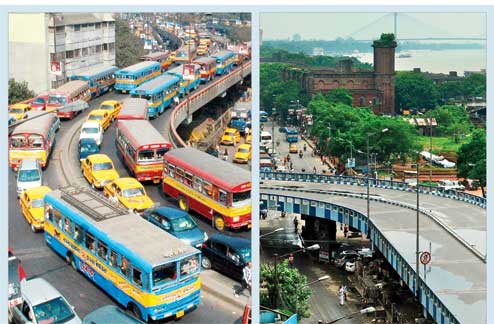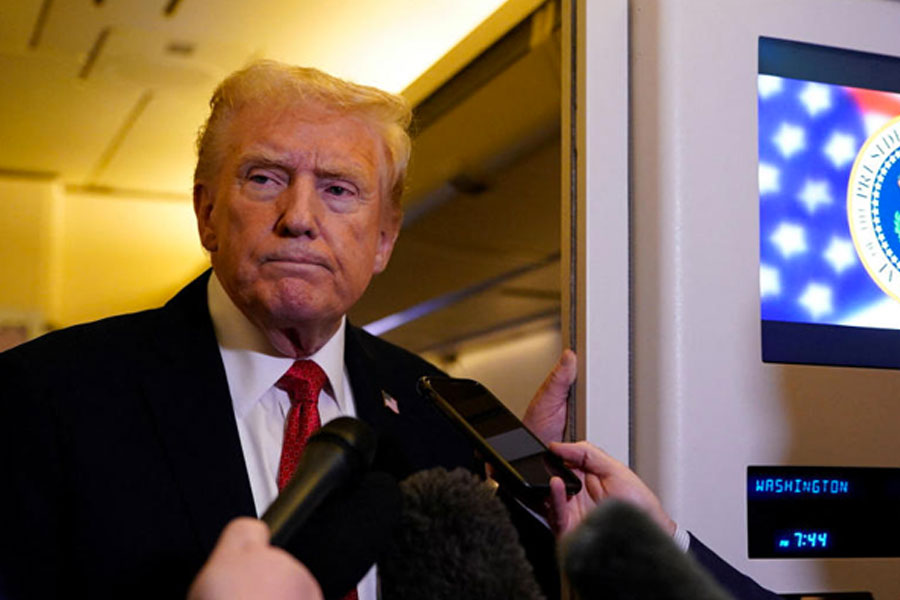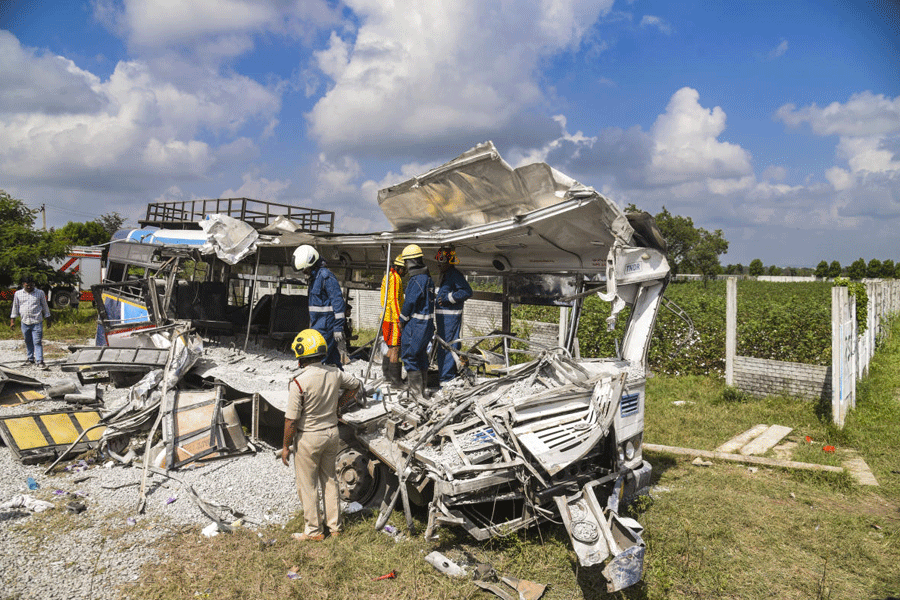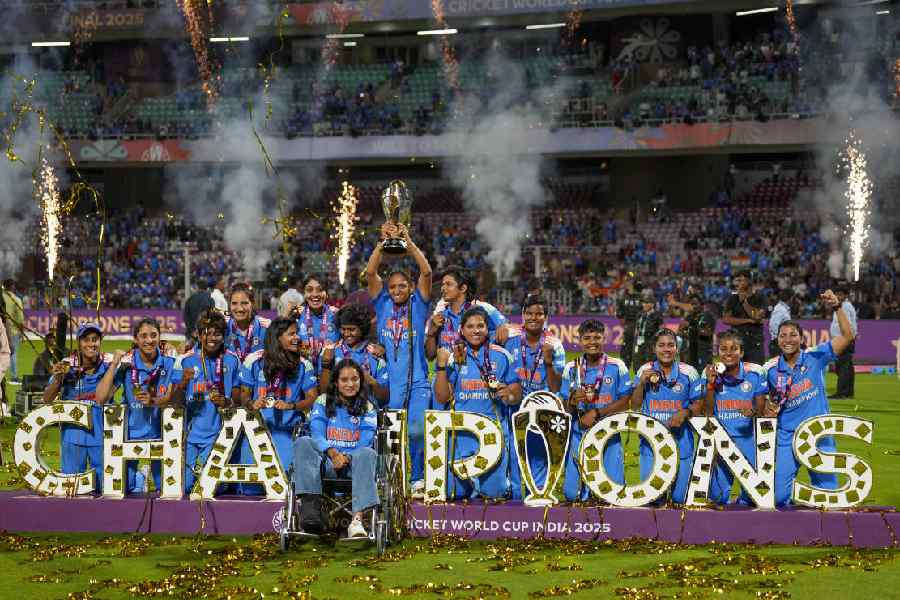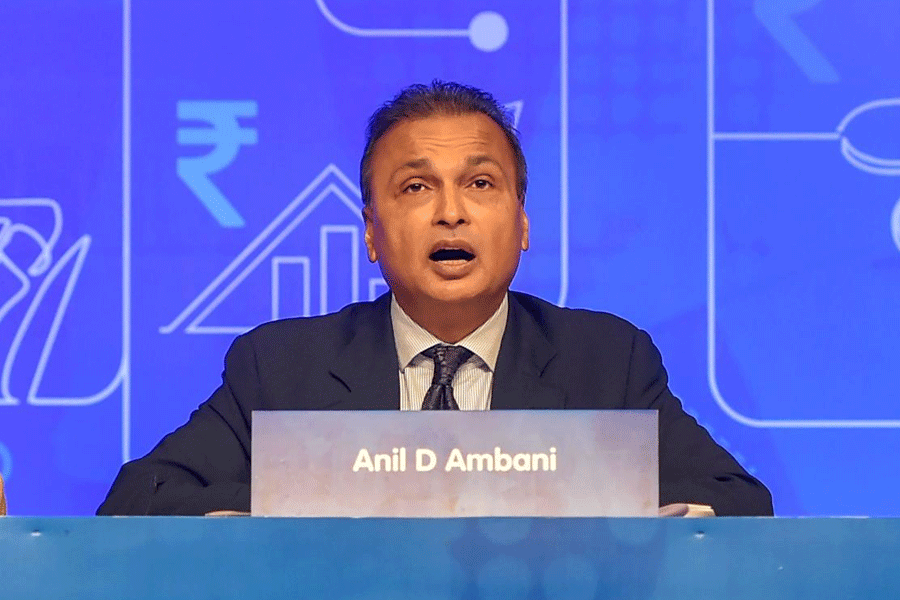The Parama flyover, as conceived in 2005, was to have four arms for dispersal of vehicles around an elevated rotary at Park Circus to ensure that a swarm of vehicles didn't descend on the crossing all at once.
Ten years on, the flyover has transitioned from vision to reality as "Ma", albeit with only the trunk of the structure in use. The result: an explosion of traffic at Calcutta's busiest intersection and the mother of all snarls that has forced police to pull the one-way rabbit out of their harried hat.
Since the flyover was opened last Friday, there have been long periods of logjam when traffic has barely moved from Science City to Gariahat, Minto Park to Moulali.
The first plan had taken into account the need to ensure that a flyover meant to eliminate snarls didn't end up creating congestion at Park Circus. Engineers who had worked on the plan told Metro that the idea of a rotary with four arms was scrapped because it entailed additional expenditure of around Rs 200 crore. The irony is that the project went on to overshoot its budget by more than Rs 250 crore because of land-related delays.
Some had seen the chaos coming. In August 2012, project planners at Consulting Engineering Services, the agency contracted to prepare a detailed project report, had warned the Calcutta Metropolitan Development Authority against opening the flyover to traffic without accounting for a potential Park Circus gridlock because of a single traffic-dispersal point.
Metro is in possession of the letter to the director-general of the traffic and transportation department of the CMDA, stating that the flyover shouldn't be opened without integrating it with the one over AJC Bose Road.
"We have learnt... that the CMDA is contemplating terminating the Parama Island-Park Circus Corridor at the Park Circus gyratory in the first phase instead of integrating it with the existing AJC Bose Road flyover. We believe this decision would spell a major disaster for the entire scheme. The worst-affected will be the Park Circus gyratory (seven-point crossing) with a domino effect at all the interconnected intersections and links in the network, so much so that the usefulness of the whole facility will be jeopardised," the letter states.
It was to avoid such a mess that a design with an aerial rotary each at Park Circus and Parama had been conceived. The proposed elevated rotary over Park Circus was to have four arms connecting to Park Street, Syed Amir Ali Avenue, AJC Bose Road flyover and Suhrawardy Avenue.
"We had put a lot of thought into it and backed it up with elaborate traffic surveys before hitting the drawing board," Tushar Mitra, the then head of planning in the CMDA's traffic and transportation wing, told Metro.
If there is any chance of redemption now, it is in the form of two proposed arms to and from the AJC Bose Road flyover. But construction has yet to start, which means another potentially long wait for deliverance from traffic mayhem given Calcutta's history of delayed projects.
Once the two arms come up, some of the traffic load will be off Park Circus, but only just. The city's traffic load is also tipped to increase by then, going by the average of 4 per cent annual growth in volume of vehicles.
Calcutta High Court has set May 2016 as the deadline for the completion of the entire project. Till then, the city would have to make do with the one-way flyover, which Park Circus-bound vehicles can use from 7am to 1pm and Bypass-bound traffic from 1pm to 10pm on weekdays.
An economist would have spied a "Pareto optimal" in the arrangement.
The Pareto optimal, called so after the 19th century Italian economist Vilfredo Federico Damaso Pareto, means it is impossible to improve the condition of any single individual without harming the condition of another.
Two cousins travelling in opposite directions realised this duality on Wednesday morning.
Sunil Bose, who lives off the Bypass, was delighted to get "a dream ride" from the Science City end of the flyover to Park Street en route to a meeting. "I reached Park Street in 25 minutes from the Ruby roundabout, just like on a Sunday!" he smiled.
Cousin Amit Bose, driving in the opposite direction, had a typically frustrating rush-hour ride. "I was forced to take the Bypass connector from Park Circus instead of the new flyover on my way to Apollo Hospitals in the morning. So it was the usual slow-motion ride," he recounted.
In 2005, former CMDA honcho Mitra and his team had drawn up a plan in which the proposed arms of the flyover were to rise to different heights, ranging from 7.5 to 15 metres above the ground. "This would have ensured even distribution of traffic and no slowing down during diversion," he said.
Asok Bhattacharya, urban development minister in the erstwhile Buddhadeb Bhattacharjee cabinet, called the decision to open the flyover without completing the entire project a "grave mistake".
"We had planned the flyover under the JNNURM scheme and it was approved in 2007. Sourav Ganguly laid the foundation stone in 2008," he recalled. "The toughest part was to plan for traffic dispersal at Park Circus and we kept thinking over it, again and again."
What he didn't say was that the erstwhile Left Front government's choice smacked of myopia - it opted to save a couple of hundred crores at the cost of traffic chaos.
An engineer who was involved in revising the plan defended the decision to scrap the elevated Park Circus rotary in the original blueprint. "An elevated rotary over Park Circus wouldn't have been the right choice. In the event of a problem cropping up, the rotation of vehicles would have got locked. On the ground, you have some option or the other," said Samiran Sen, who was part of the CES team for the Parama flyover.

